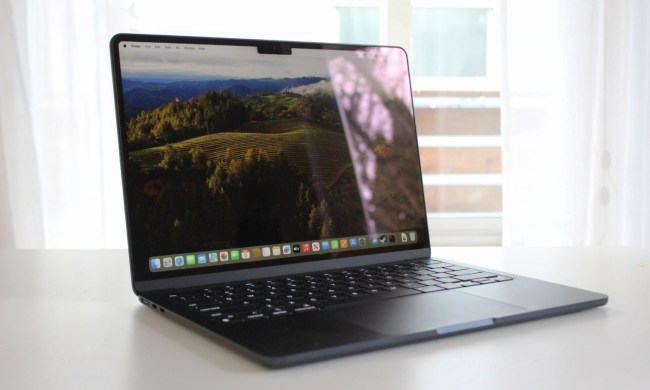While the general consensus regarding whether a Mac is more secure than Windows leans toward Apple’s system, it doesn’t mean a Mac is still unable to be affected by hackers and malware; it's still vulnerable. When it comes to security, the Mac includes a few built-in features that go a long way in providing a secure user experience. We take a look at how to use some of these, namely the firewall and stealth mode on MacOS.
How to use a firewall
Before we explain the steps in using a firewall on a Mac, it’s important to understand the actual purpose behind a firewall. Firewalls protect the system from an outside threat actor or a harmful connection gaining access to your Mac when you’re connected to the internet or to a given network. With this in mind, it doesn’t necessarily work in the same way traditional antivirus software operates, but that’s not to say it’s a redundant feature.
Macs can always be targeted in order for someone to infiltrate your system when utilizing a network that’s not trusted or unknown. That being said, let’s take a look at the steps you can take for using a firewall on a Mac.
Step 1: Select the Apple logo on the top left of your Mac screen and open System Preferences, choose Security & Privacy, and click the Firewall tab.

Step 2: You’ll need to click the lock button located at the bottom-left corner. Enter your username and password (providing you’re an administrator).
Step 3: Select the Turn on Firewall button.
If you know what you’re doing and require more specific control over the firewall, select the Firewall Options button. Here, you’ll have access to the following (for macOS Monterey):
Allow only specified apps and services to connect: Click the Add (or "+" sign for earlier versions of macOS) button, and choose the app or service you wish to include. With each application you add, you have the ability to either allow or block incoming connections.
Allow only essential apps and services to connect: Choose the Block All Incoming Connections box.
Automatically allow built-in software to receive incoming connections: This option is enabled by default and allows default Mac apps to receive incoming connections.
Automatically allow downloaded signed software to receive incoming connections: This is also enabled by default and allows any software that is signed by a valid certificate authority to provide services accessed from the network.
Enable stealth mode: The final configuration option when it comes to the Mac’s firewall is a feature that strengthens the overall security of your Mac, consequently making it more challenging for hackers and malware to infiltrate your system. One example of this is unexpected requests such as ICMP (ping) being ignored by your system. Stealth mode will also prevent your Mac from responding to probing requests. That said, the system will still be capable of answering incoming requests for authorized apps. It’s a particularly relevant feature for when a Mac is connected to external networks — more on that in the next section.
Ultimately, upon your Mac detecting an attempt to connect to an app that hasn’t been included within the list of apps that can access your Mac, an alert will pop up giving you the choice to allow or deny the connection over either the network or internet.
If you attempt to open an unsigned app that is not listed within the firewall list, a message that gives you options to Allow or Deny connections for that app is shown. Clicking Allow will make your Mac’s operating system sign the application, as well as adding it to the firewall list automatically. Selecting Deny, meanwhile, makes the Mac add the program to the list but denies incoming connections for the app itself.

How to use stealth mode
As we touched on above, stealth mode is a useful feature that will essentially make your Mac invisible to outside networks. It’s not necessarily essential when you’re confined to your own private network when at home. However, it can prove to be useful when you’re exposed through a public or shared network in settings such as coffee shops that provide Wi-Fi or an internet hotspot point when you’re commuting, university Wi-Fi access, etc. However, you can also use your iPhone is an internet hotspot for your Mac.
Hackers and criminals can target a Mac if it’s connected to a public or shared network. By enabling stealth mode, no one else that has access to the same network you’re using can discover your system.
Step 1: Go to System Preferences, click Security & Privacy, and select Firewall.

Step 2: You’ll need to have the Mac’s firewall enabled. Click Firewall Options and then click the Enable Stealth Mode button. Click OK to confirm the change.
It should be noted that with stealth mode enabled, it could potentially make it difficult to diagnose and troubleshoot an issue pertaining to network access. It can offer an additional layer of security when you’re using a public network, but when at home, a Mac that has stealth mode switched on won’t be capable of receiving or responding to ping requests. Connection attempts from a closed TCP or UDP network will also be completely rejected.
You won’t even receive a message from the Mac that lets you know a connection is attempting to be made to your system. As such, just be sure to know whether you have the setting enabled or you may spend countless hours trying to fix connectivity issues.
If you're concerned about data privacy, here's how to encrypt data with FileVault on your Mac.




